Perhaps you’re considering adding a phoenix chicken to your backyard flock, or maybe you are just one of the curious minds eager to learn something about this long-tailed chicken breed.
Either way, you’re in the right place.
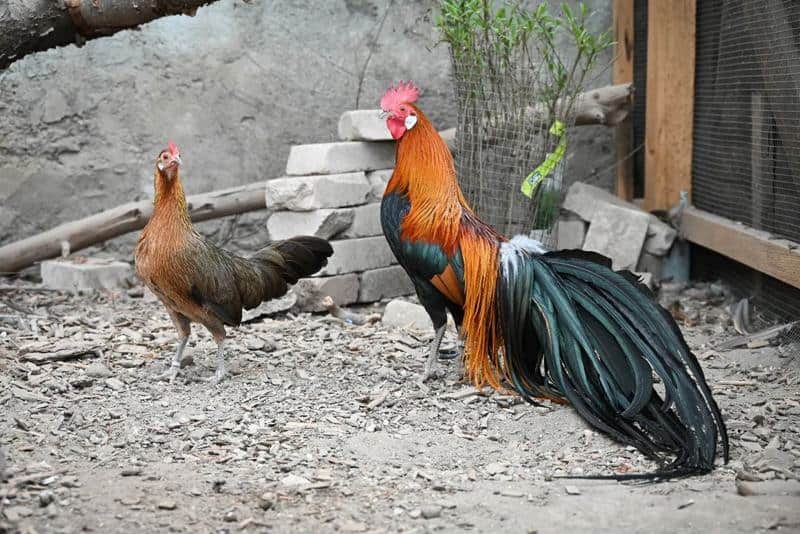
In our today’s expedition, we’ll take a deep dive into this ornamental chicken breed, keenly examining their ins and outs.
Right from their origin and the history of their long cute tail to their temperament and egg-laying capabilities, there’s so much to learn in our coverage.
Let’s dive in!
Phoenix Chicken Quick Facts
Before we dig into the actual content, here’s a summary of key points about the Phoenix chicken breed.
| Origin | Europe, Germany |
| Body size | Medium |
| Weight | Roosters: 5.5 lbs
Hens: 4 lbs. |
| Temperament | Active, friendly when well-trained, flighty |
| Recognized colors | Silver, golden, and black-breasted red |
| Color of combs, wattles, and earlobes | Comb and wattle – bright red
Earlobes – white |
| Comb type | Single |
| Leg type | Clean and smooth without feathers |
| Leg color | Blue to slate |
| Skin color | Yellow |
| Dual-Purpose | Yes, but not so good at both |
| Number of eggs per year | 56 to 126 |
| Egg size | Small to medium |
| Egg color | Pale cream to tinted brown |
| Cold-Hardy | No |
| Molting | Annually or biennially |
| Broody | Yes |
The History of Phoenix Chicken Breed
The Phoenix chickens were first developed in Germany. They’re descendants of Onagadori — a Japanese chicken breed famous for its long tail — although their development also brought a few non-Asian breeds into the equation.
The Onagadori chickens were a product of a cross between several Asian chickens — the Totenko, Shokuku, and Minohiki breeds. This combination equipped the bird with a recessive gene that kept their feathers from molting, giving them an ever-growing tail.
The Onagadori chickens remained in Asia until a few Europeans visited and took several of them to Europe. However, things didn’t go as expected in their new homeland, as most Onagadori chickens carried to Europe couldn’t stand the cold climate, leading to the death of most of them.
A quick solution was needed, so the first president of the German Poultry Association, Mr. Hugo du Roi, came up with the idea of crossing the Japanese breed with several breeds known to withstand the cold European climate better.
It’s from this cross that we got the modern Phoenix chicken. The crossing effort brought together the Onagaduri, Modern game, Leghorn, Old English game, Malay, Yokohama, Kruper, Lamelsloher, and Bruegge game chicken breeds.
The breed quickly became popular and found its way to the United States and other parts of the world. It was then recognized by the American Poultry Association in three varieties — Silver, Golden, and Black-breasted red, in 1965, 1983, and 2018 respectively.
Size and Appearance
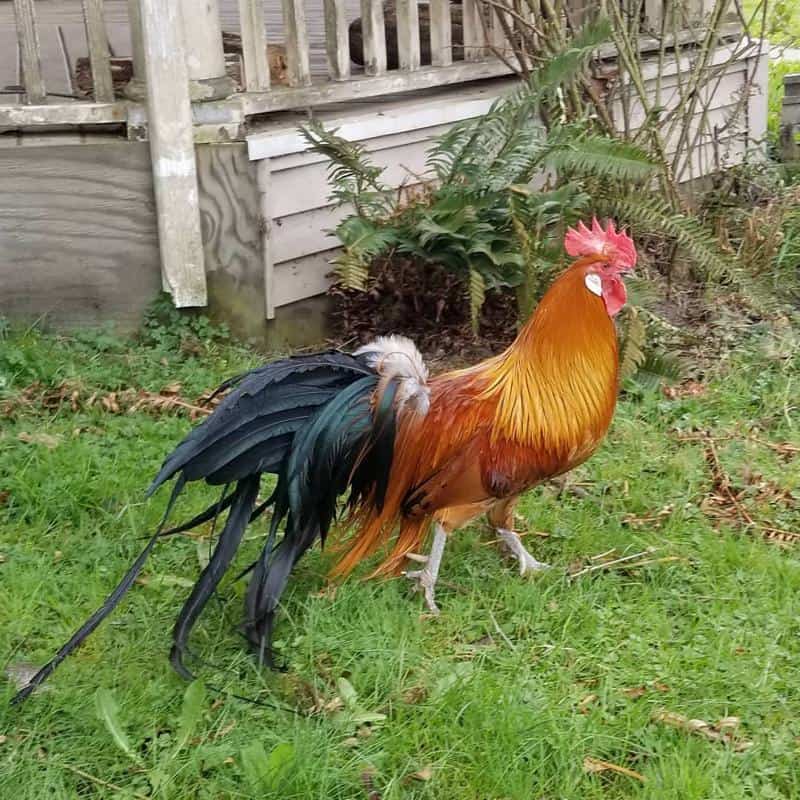
The Phoenix chicken is a medium-sized bird featuring a long, slender body. The roosters usually weigh up to 5.5 pounds when fully grown, while the hens reach the weight of about 4 pounds. But that’s for a standard breed.
If you want a smaller version of the breed, Phoenix chickens are also available in Bantam kinds. Similar to the standard variant, it’s the male bantam that will weigh more than the female.
Usually, male bantams have an average weight of about 1.65 pounds, while females weigh about 1.5 pounds on average.
On appearance, Phoenix chickens come in a wide array of plumages — silver, gold, white, black-breasted red, golden duck wing, silver duck wing, light brown, and many others.
However, the American Poultry Association only recognizes three colors; silver, gold, and black-breasted red for the standard size. As for the bantam, the association only recognizes two bantam varieties — silver and golden.
The ornamental chicken has saddle feathers reaching about 12 to 18 inches. The tail feathers can grow to a whopping 2 to 5 feet in length, although it’s only the males that come with a long tail.
The chicken usually has dark reddish-orange eyes and a slightly curved beak. It also has a single comb and medium-sized wattles and earlobes. The combs and wattles are bright red, while the oval-shaped earlobes are white. At a glance, the white earlobes make the chicken appear as though wearing hearings.
As for the feet, they are smooth and clean without any feathers on them. Their color can range from blue to slate, depending on the individual bird.
But then, it’s important to note that these are just the general characteristics of Phoenix chicken appearance. Individual variations within a breed still exist, so don’t be surprised when you get a breed exhibiting different characteristics from what we’ve mentioned here.
Temperament
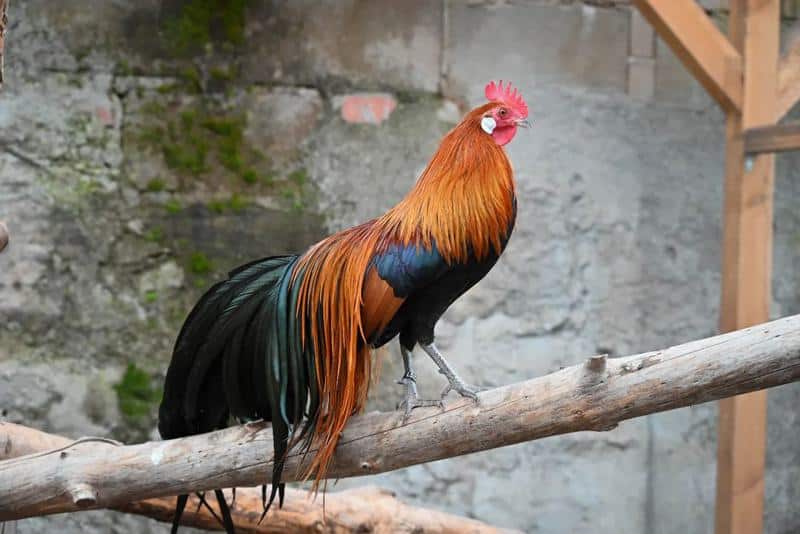
Similar to physical appearance, individual temperamental variations may exist within a breed. As such, it’s possible to get one Phoenix chicken behaving the exact opposite of the other. Nonetheless, let’s look at some of the common personalities of this breed.
Just Not Super Friendly
If you’re looking for a super-friendly bird that will find it easy to interact with kids and other chickens, it’s unfortunate that the Phoenix chicken doesn’t come under that category.
That’s because, unlike most backyard breeds, Phoenix chickens can be a bit standoffish, with the males leaning towards aggression, especially when they feel threatened or bothered.
However, you can easily modify the undesired behavior by handling the chicks right from their young age and socializing them with other chickens. Doing this will help them understand it’s okay to be handled and associate with other chicken breeds, and they will grow accustomed to it.
Flighty
The other temperament you need to know about Phoenix chickens before you bring them on board is that they tend to be a bit more flighty than most of the other chickens, and their long feathers seem to complement this instinct.
Well, that’s not to say they’ll fly away once brought into your home. After all, chickens are generally poor at flying and can’t remain airborne for more than a few seconds.
In other words, if you have a quarrelsome neighbor, you might want to come up with ways of ensuring that you keep your Phoenix chickens within your yard always, as they can easily find their way into your neighbor’s yard.
Ensure that your space has a perimeter fence that’s tall enough to keep chickens from flying over it. Usually, a fence that’s 6 feet tall is a rule of thumb for most chickens, but you may want to work with a foot or two of additional height if you have the Phoenix chicken breed in your flock.
Super-Active Bird
One thing you will notice about Phoenix chickens is they’re very active. They won’t mind spending the better part of their day interacting with their surrounding as they forage and make new discoveries.
So, as you bring them into your home, ensure you have enough space for them to walk around if you want to keep them happiest.
But if you don’t have much backyard space, don’t worry — these birds are versatile enough and will thrive in confinement. But ensure that you provide a spacious coop with a good amount of ventilation. Also, ensure that it’s dry enough to keep the feathers clean and dry as well.
Egg Production
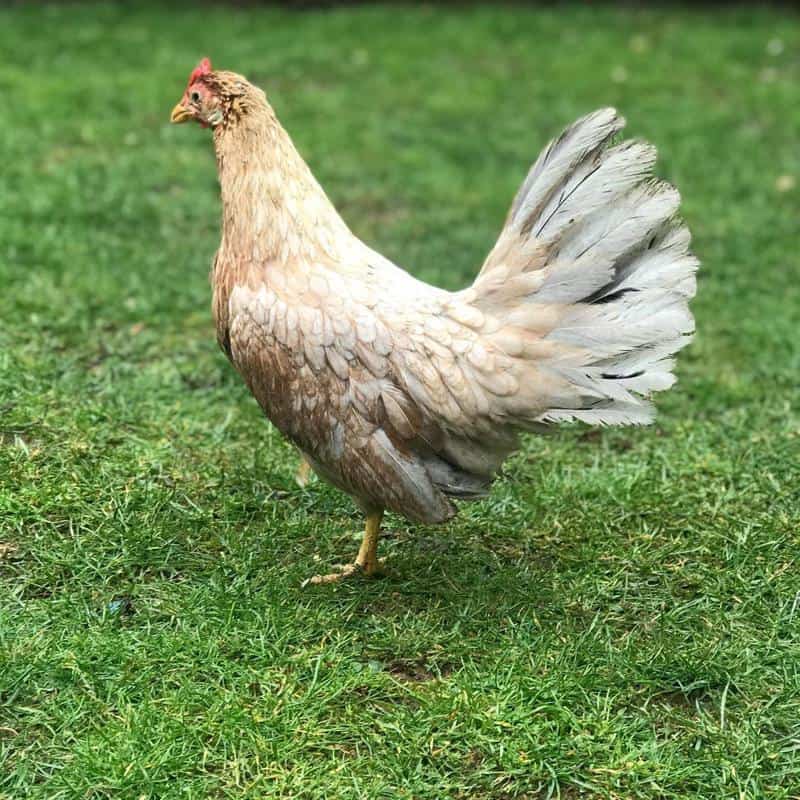
Phoenix chickens generally have a fair yield of about 56 to 125 eggs per year. That’s to say you can expect your hen to lay an average of an egg or two every week, which isn’t a very impressive count.
The eggs are usually small to medium in size and can come with a color ranging from pale cream to tinted brown, depending on the individual bird.
But then, keep in mind that birds are not cold-hardy. Therefore, as the cold months of winter roll around, they will focus more on keeping themselves warm than laying eggs, causing their yield to decrease or even stop for some time during this time.
For that reason, for anyone looking for a chicken breed with reliable and excellent egg-laying capabilities, the Phoenix chicken won’t make the most thoughtful choice. They, however, go broody from time to time, and the hens make excellent moms.
Uses
While some chicken keepers use these chickens as layers, they just aren’t too good for the role. Their egg yield is way too low, especially compared to prolific layers like the Rhode Island reds, Leghorns, or even the Black stars.
As table birds, Phoenix chickens neither impress as much, and that’s because they don’t have much meat like other birds reared for meat. Plus, even with their little meat, it takes them quite a while to accumulate it, which means they won’t be much profitable when kept for meat supply.
However, as ornamental birds, Phoenix chickens are perfect for the role, thanks to their enchanting looks. But as expected, that comes with an extra bit of tender love and care to keep their long feathers looking their best, something new chicken parents may find a tad difficult to keep up with.
Nutrition
Like other breeds, the ideal diet for your Phoenix chickens depends on their stage of development. Chicks and immature chickens will need a protein-rich diet to help them build tissues and grow the long tails.
As for laying hens, offer food with a good amount of calcium. It will help them produce healthy eggs that are unlikely to break. Mix the calcium supplement in their food or use a separate feeder if you’re using the same feeder for your entire flock.
Besides food, provide clean water to your Phoenix chickens. It will help facilitate digestion and perform other bodily functions.
It’s also good to occasionally disinfect water to avoid health issues likely to emanate from drinking contaminated water.
To do that, just add a tablespoon of apple cider vinegar (ACV) to every gallon of drinking water you add to your chickens’ water containers. The vinegar lowers the pH of the water to prevent slime from occurring and boosts the birds’ immune systems.
Also, keep the water from direct sunlight to curb algae from forming. Of course, the waterers must also not be stationed in areas accessible by wild birds to avoid the transmission of diseases to your flock.
Housing
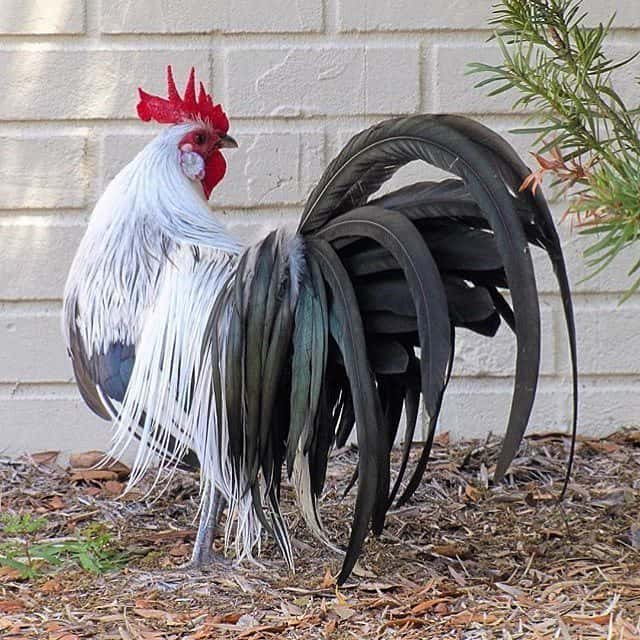
As aforementioned, Phoenix chickens do much better when given the freedom to roam around, but they can also thrive in confinement. Just ensure that their housing is well-ventilated and spacious.
The rule of thumb is that a standard chicken should get at least 4 square feet of space, but offering your Phoenix chickens a larger amount of space would be much better, considering that they have a long tail sticking out.
Also, ensure their space has all the necessary modifications to suit their housing needs. For instance, you should have higher perches installed, as these birds would prefer to spend most of their time there to keep their tails clean.
Common Healthy Issues
Phoenix chickens aren’t in any way less or more vulnerable to diseases than other chicken breeds. As such, ensure they get the proper healthcare if you want them to stay happy and healthy.
Common avian health issues like fowl cholera, avian influenza, infectious bronchitis, aspergillosis, and fowl pox have some chances of occurrence. But if you keep the coop clean and dry and take all necessary precautionary measures, your Phoenix chickens can enjoy a healthy, long life.
Pros and Cons of Phoenix Chicken Breed
Like any other chicken breed, there’s a good and bad side to bringing Phoenix chickens into your home.
Pros:
- Very cute
- Friendly when well-trained
- Active and agile
- Good foragers
- Can tolerate confinement as long as adequate space is provided
- A generally healthy breed
Cons:
- High-maintenance needs
- Not so good at egg and meat production
- Slightly aloof when not trained
- They need a customized coop
Also Read:
Conclusion
Phoenix chickens are a fantastic breed with a striking appearance and a generally good temperament. They may not be the best for those looking for pets, although they can be trained to become friendly around people and the rest of the poultry flock.
They aren’t prolific layers, and neither do they make the best meat birds, but they emerge top on the list as ornamental birds, thanks to their beautiful long tail that gives them enchanting beauty.
But before you go for them, keep in mind that they’re flighty and require some special maintenance to keep their tails clean and beautiful.
As such, if you’re just beginning your chicken-keeping journey and are on the verge of learning the ropes of poultry farming, you’d rather work with a safer breed.
